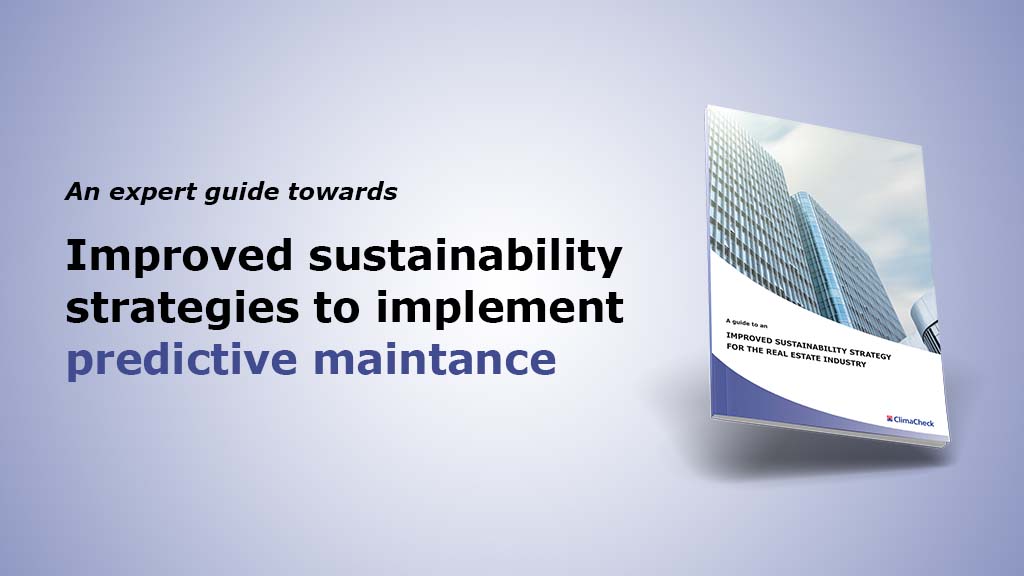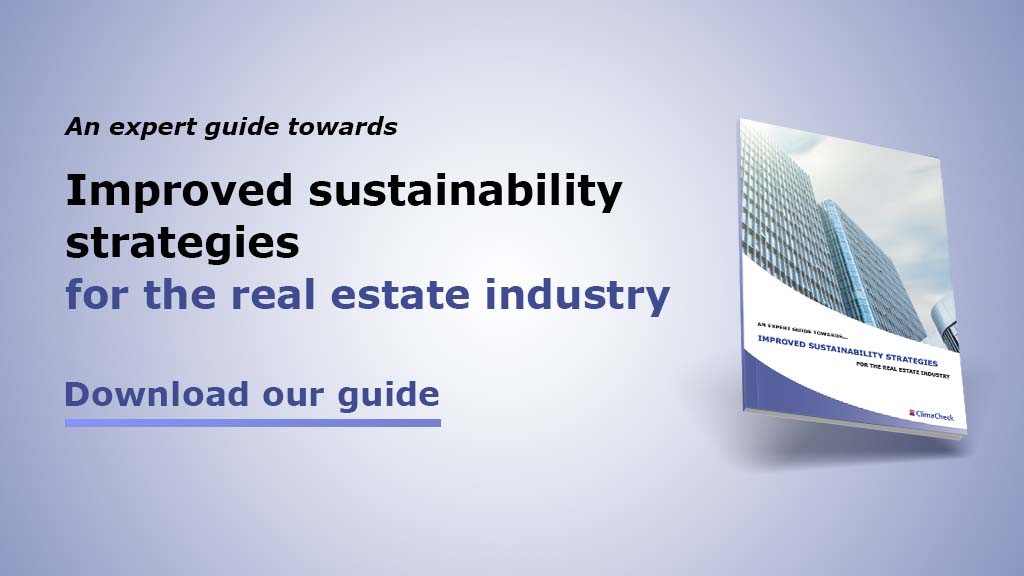Strengthen your sustainability strategy with predictive maintenance
Today, almost all organisations have implemented strategies to achieve some, or all, of the United Nations’ 17 sustainable (2030 Agenda). There are many areas that can be focused, to contribute to these goals and decrease CO2 emission while saving money. The challenge is not so much the goals themselves but identifying the solutions with the biggest impact and the shortest ROI.

Download the guide here:
The real estate industry
Currently, the real estate industry annually emits around 39% of Global Greenhouse Gases (GHG) while consuming around 30% of the world’s energy. In other words, the industry currently has one of the highest carbon footprints of any industry in the world.
The real estate industry needs to move on from its ‘bad guy’ image and push to reinvent itself as one at the forefront of sustainability and championing the environment. This is, admittedly, not an easy task! It will require dedication from the organisations to find key areas to boost sustainability while reducing their environmental impact.
Some starting points include:
- Certification of Buildings with Green Building Certification Systems
- Selecting and reusing building materials with a low environmental impact where possible
- Choosing eco-friendly energy supplies and HVACR systems with the highest possible efficiency to minimise energy consumption
- Make building and installed equipment operate as efficiently as possible over time.
As with so many things in life, the key to success is to use the right method, at the right time, in the right place. The possibilities are endless and increasing daily, in part due to new methods that combine performance analysis and the Internet of Things (IoT). These new solutions already have a major impact in the short- and long-term for organisations that implement them.
Predictive maintenance
When the correct data is collected and performance analysis is performed, it is possible to implement predictive maintenance and work efficient with energy optimisation. When this is done multiple benefits “appears” reliability is enhanced and it is most likely possible to reduce the energy consumption between 10 – 30% . Which lowers both the CO2 emission and electricity cost.
Most organisations need cooling in their facilities for air conditioning, refrigeration, food storage, and process cooling. As well as heat pumps to produce hot water and keep the indoor temperature. Approximately 30 – 60% of the building’s total energy consumption is used by these (HVACR) systems. However, the efficiency of these systems is often overlooked, as long as the desired temperature is delivered and staff or tenants do not complain about heat or cold!
A guide for an improved sustainability strategy
Because of this, we have put together a guide that will give you a better understanding and help you to implement predictive maintenance on your HVACR-systems. To save money and accelerate your sustainability work.
You can download the guide here:

More news
Partner Spotlight: Neena Gill on the Climate Hero Club Podcast
In the episode, Neena shares her ClimaCheck experience and insights on why improving HVACR efficiency is one of the fastest and most cost-effective ways to reduce energy use and emissions.

World Refrigeration Day 2025 – Technology, Climate Action and an Industry Progressing into the Future.
June 26th marks World Refrigeration Day, a day to recognise the technology that enables life as we know it.

Office Hours During Midsummer Celebrations and the Summer
We wish you a joyful Midsummer celebration filled with happiness
